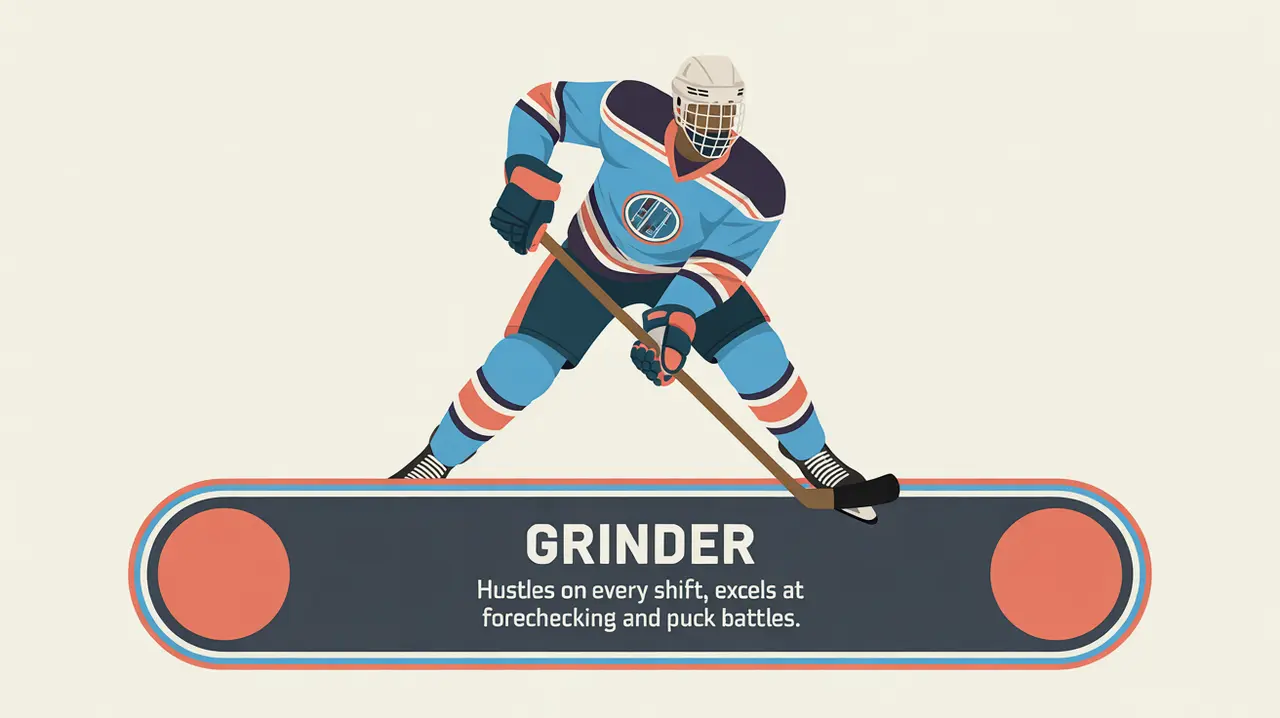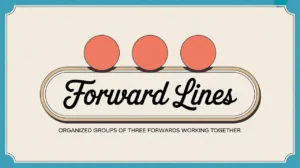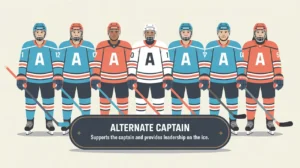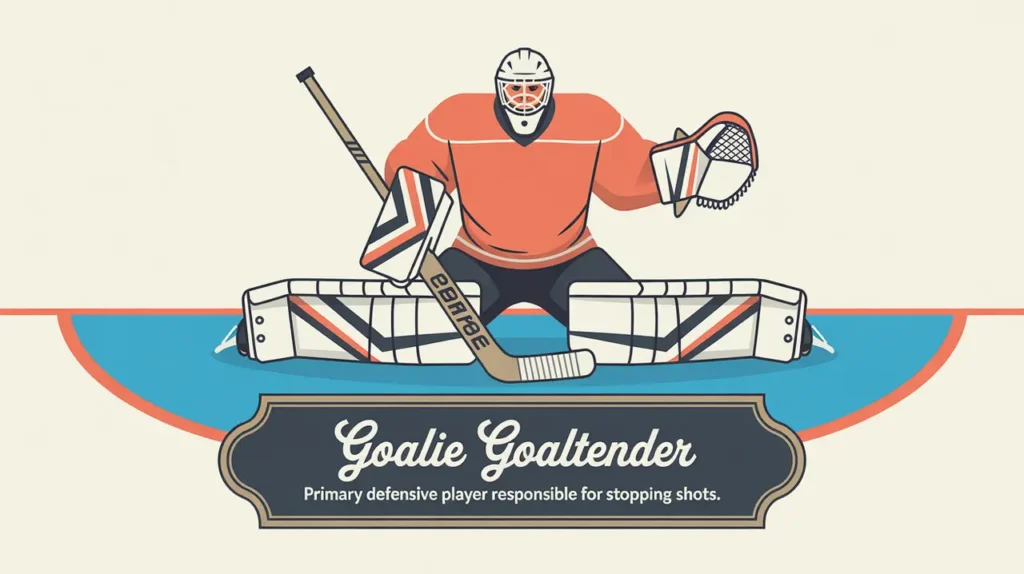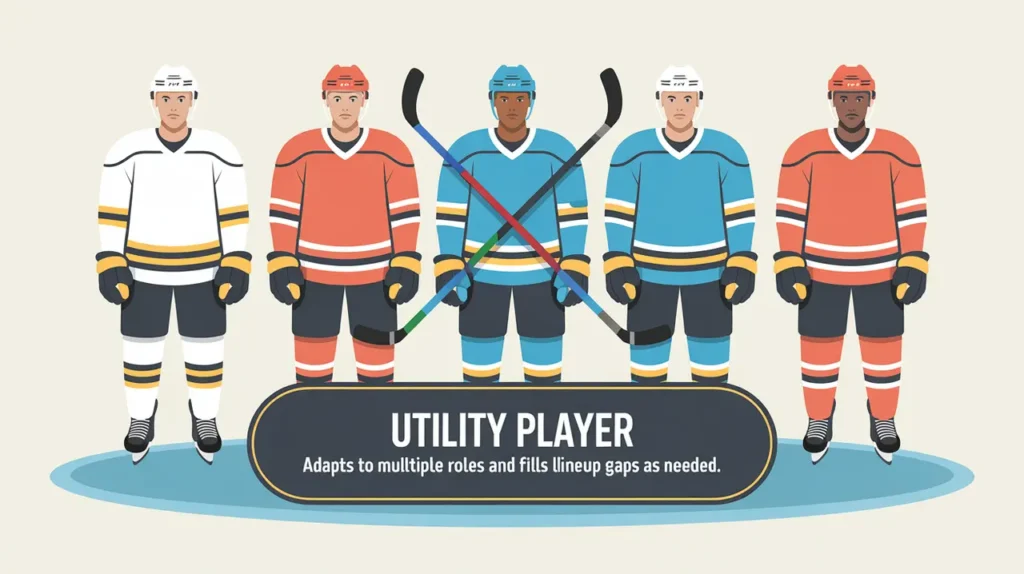Jim’s Intro to the Grinder
Hi folks, Jim here, the only commentator who once tried to forecheck in a charity game and ended up winded halfway through the first shift.
What is a grinder?
A grinder is a player whose game is built on relentless effort, physical play, and doing the unglamorous jobs that create space and momentum for their team. They’re not always the top scorers, but they win board battles, kill penalties, wear down opponents, and keep plays alive through sheer determination and smart positioning.
Grinders often play on checking lines, but their impact can be felt anywhere. They’re the players who make life miserable for the other team every shift.
How does it work?
Grinders influence the game through work ethic, structure, and pressure:
Board Battles and Puck Retrieval
- Grinders excel at winning 50/50 pucks, using body position and grit to keep possession alive.
- They dig pucks out of corners and feed teammates in better scoring positions.
Forechecking and Pressure
- They pressure opposing defensemen relentlessly, forcing turnovers and rushed breakouts.
- Smart grinders angle opponents into bad decisions rather than just chasing blindly.
Defensive Reliability
- Grinders backcheck hard, fill lanes, and support defensemen low in the zone.
- Coaches trust them to take defensive-zone draws, block shots, and shut down top lines.
Momentum Shifts
- A single hard-working grinder shift can swing momentum, drawing penalties, hemming opponents in, or simply tiring out star players.
- Their energy often sparks teammates to elevate their intensity.
Special Teams
- Grinders are key penalty killers, using stick pressure and anticipation to disrupt plays.
- On power plays, some work net-front screens or retrieve loose pucks.
Common Situations Involving Grinders
- Tight Games and Playoffs: When space disappears, grinders thrive in the trenches.
- Forecheck Pressure: Leading the charge to keep opponents pinned.
- Defensive Zone Work: Helping break cycles and clear danger.
- Momentum Shifts: Turning a quiet bench alive with one gritty shift.
- Late-Game Situations: Protecting leads through structure and effort.
How do you make good decisions with it?
Good grinders rely on smart reads and relentless consistency.
- Angle, Don’t Chase: Force defenders into mistakes with smart positioning.
- Win the Little Battles: Every puck chipped out or recovered matters.
- Know Your Role: Play to your strengths. Forecheck hard, defend well, keep it simple.
- Disrupt, Don’t Overcommit: Effective grinders frustrate opponents without putting their team at risk.
- Support Teammates: Set up skilled players with hard work, not forced heroics.
How do you master it?
Mastering the grinder role takes conditioning, physical strength, and tactical discipline. Elite grinders train to sustain high effort over long shifts, refine their checking angles, and learn how to anticipate plays. They also sharpen their puck protection and retrieval skills so that their hard work turns into real possession time, not just chaos.
What does it look like when done right?
A great grinder charges in on the forecheck, angles the defenseman into the boards, wins the puck, and cycles it to a teammate. On the backcheck, they strip a puck clean and clear the zone under pressure. They block a shot late in a tied game, get up without complaint, and finish their shift with another smart play.
Commentator’s Corner
Jim’s Take
Grinders don’t fill highlight reels. They fill win columns. Every championship team has a few who do the thankless jobs better than anyone else.
Parent Tip
If your player plays like a grinder, emphasize skating endurance, positioning, and confidence in their role. Their impact is often invisible on the scoresheet but huge on the ice.
Player Tip
Own your identity. Grit and smart play can change games. Keep your shifts honest, play hard every time, and your teammates will follow.
A Final Thought
Grinders are the engine room of hockey teams. They tilt the ice not through flash, but through effort, disruption, and relentless consistency. When mastered, this role transforms work ethic into tangible impact, shift after shift.

